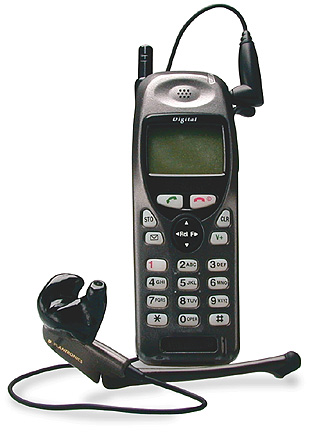The statistics are in. According to an Associated Press article this year, the government reports that nearly three percent of Americans behind the wheel at any given daytime moment are also talking on hand-held cell phones. This equates to an estimated 500,000 drivers who are using hand-held cell phones during the day at any one point. This number, however, excludes "hands free" headsets.
On November 1, 2001, New York became the first state to ban hand-held cell phones while driving. Additionally, another dozen localities and twenty-three foreign countries have established comparable bans and most other states are considering similar laws.
Does this mean drivers can no longer stay in touch while on the go? Hardly.
Indeed, cell phones on the road have become important, even necessary, especially in emergency situations. What follows are a few common sense tips that will help maintain your safety during everyday situations, as well as emergencies.
1- Know Your Phone:
It is likely that your phone has many enhanced features. Familiarize yourself with your phone so you can take advantage of these valuable features. Most modern phones include automatic redial, memory dial and most phones can store up to 99 numbers in memory. The instruction book is a good place to start!
2- Make Use of Hands Free Devices:
Use a hands free device. Just about every cell phone can be adapted inexpensively for hands free use. Take a look at our website, www.westonelabs.com for more information on custom made earpieces for your phone and related products.

3- Keep Your Phone Nearby:
Place your wireless phone where you can get to it without taking your eyes off the road. Let incoming calls go to the voice mail service when necessary.
4- Talk Only When Conditions Permit:
If you're in hazardous weather conditions or heavy traffic, stay off the phone. Your priority should be driving, and what is going on around you. As a responsible driver, you must remain focused on the road.
5- Focus on Your Driving:
Don't look up phone numbers, don't take notes or play with your PDA (personal digital assistant) while driving. These activities prohibit you from watching where you are going. Of course, you shouldn't read the paper, apply eye make-up or write notes while driving either! Driving is serious business.

6- Constantly Evaluate the Traffic and Dial Accordingly:
Wait until you are not moving to place a call. Plan calls prior to leaving.
7- Delay Distracting Conversations:
Emotional or stressful conversations can be distracting and are dangerous to your driving. Delay conversations that will take your attention away from driving until you're out of the car, or not moving.
8- Call for Help with Your Phone:
Perhaps the greatest tool you can own to protect yourself and your family in dangerous situations is your wireless phone. Indeed, help is only three numbers away. In the case of fire, traffic accident, road hazard, or medical emergencies, simply dial 9-1-1.
9- When Necessary, Call Roadside Assistance:
Call a special wireless non-emergency assistance number or roadside assistance when necessary. Not every situation you encounter will be an emergency. Still, you can use your wireless phone to help out. Broken down vehicles, a traffic signal that isn't operating, a minor non-injury traffic accident, or known stolen cars can be reported to roadside assistance or other non-emergency numbers. Keep these numbers in your phone's memory.
10- Plug into comfort and clarity you never thought possible from a wireless phone:
Now it's easy to go hands-free with a custom earpiece from Westone attached to a lightweight microphone. Westone's earpiece fits securely and comfortably into your ear, allowing you to hear your calls with a clarity and crispness you never thought possible...while keeping your hands free for driving, working in the office, cheering kids at soccer matches, or even vacuuming. Because the earpiece is uniquely created from the user's own ear and firmly attached to a boom microphone, the comfort far surpasses the one-size-fits-all hanging microphones on the market.
11- Your ears are unique, and Westone makes unique earpieces:
Just like a fingerprint, everyone's ears are unique. Only an earpiece made specifically to fit your own ear can provide the ultimate in personal fit and comfort.
For over 42 years Westone Laboratories has been making custom products for the human ear. These earpieces are custom-molded from an impression taken from your ear--a quick and simple process. The result is a small, unobtrusive earpiece that fits your ear perfectly. The custom earpiece won't fall out like generic earbuds do, nor is it bulky and uncomfortable like a generic headset. Because it fits every contour of your ear, you don't need clips, springs, or other devices to make it stay put. With a custom earpiece, you can spend hours on the phone in complete comfort.
12- Make just one more call without a custom earpiece... to your hearing healthcare professional.
Your hearing health professional (look in the yellow pages under "audiologist" or "hearing instrument specialist") can make an impression (also called a "cast") of your ear and they can send your order to Westone. A list of authorized Westone dispensers can be found at www.westonelabs.com. Your hearing healthcare professional is your single best source for information about your hearing and how to hear better!
13- Drive Safely:
Remember -- wireless phones are great conveniences, unless they distract you from more important things. Driving safely is always the goal. If the phone will distract you, or if using the phone is not allowed -- don't do it! If you are going to use the phone while driving, use a hands free custom made earpiece for the best results and the least distractions.
